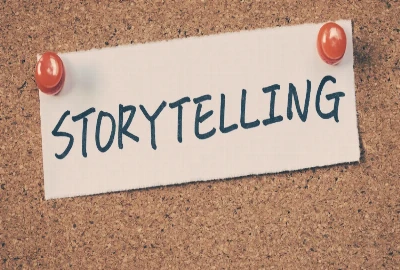Shadow Banning the Plot: Algorithmic Censorship in Narrative Reach

In today’s digital-first culture, storytelling isn’t just about creativity—it’s about visibility. Platforms like TikTok, Instagram, YouTube, and even streaming services operate on complex algorithms that decide what gets seen, what gets buried, and sometimes what disappears entirely. While traditional censorship used to be overt—state-driven bans, editorial restrictions, or publisher refusals—today’s version is subtler. It’s algorithmic censorship, often disguised as “content moderation” or “community guidelines enforcement.”
The issue extends beyond viral videos or political commentary. It affects authors, filmmakers, journalists, and creators whose stories depend on digital reach. Shadow banning—a form of algorithmic censorship where content is suppressed without explicit notice—has become a silent barrier to narrative visibility. As algorithms tighten their grip on distribution, creators are asking: Who really controls the plot?
This blog explores how algorithmic censorship impacts narrative reach, why it matters for culture, and what storytellers can do to push back.
The Hidden Hand: What Is Algorithmic Censorship?

Algorithmic censorship refers to the suppression, filtering, or deprioritization of content by automated systems, rather than human editors. Unlike traditional censorship, which typically involves explicit bans, algorithmic suppression often happens invisibly. Creators may continue publishing, unaware that their audience can’t see their work because algorithms have decided it’s “not suitable” or “not engaging enough.”
Shadow Banning and Its Effects
Shadow banning is the most notorious form of algorithmic censorship. A user might post a video, article, or podcast, but the platform quietly reduces its visibility in search results, timelines, or recommendations. This creates the illusion of activity without actual audience reach. For storytellers, it’s like performing to an empty theater—without even realizing the seats are vacant.
Beyond Obvious Censorship
Not all algorithmic censorship is politically or morally driven. Sometimes it’s simply a byproduct of profit motives. Platforms favor “sticky” content that keeps users scrolling, which means nuanced, complex, or slower-burning narratives often lose out to fast, flashy trends. Long-form storytelling, investigative journalism, and experimental art can all get buried beneath a sea of dance clips and memes.
Why It Matters for Creators
For storytellers, visibility isn’t optional. Algorithms dictate cultural discovery, meaning that the reach of a narrative often depends less on its quality and more on its compliance with opaque digital rules. The danger? Stories that challenge, provoke, or innovate may never find their audience.
Narratives at Risk: Whose Stories Get Silenced?

Algorithmic censorship doesn’t affect all creators equally. Certain narratives—whether political, cultural, or artistic—are disproportionately suppressed, raising questions about power and representation in digital spaces.
Political and Social Storytelling
Political satire, activist movements, and marginalized voices often face higher levels of suppression. Content mentioning sensitive topics like protest, inequality, or human rights may be flagged as “sensitive,” reducing its reach. This creates a chilling effect where storytellers must self-censor to survive online.
Independent Artists and Journalists
Independent creators without institutional backing are particularly vulnerable. Unlike large studios or media outlets, they can’t rely on partnerships with platforms to guarantee reach. For indie filmmakers, podcasters, and writers, an algorithmic demotion can erase years of work overnight.
Cultural Memory and Minoritized Voices
Algorithmic suppression also threatens cultural memory. Indigenous, immigrant, and diaspora narratives often face invisibility, especially when their cultural references don’t align with global algorithmic trends. If platforms dictate which cultural stories are “marketable,” entire histories risk fading into digital obscurity.
The Economics of Visibility: Why Algorithms Choose Winners

To understand algorithmic censorship in narrative reach, we must look at its economic roots. Platforms aren’t neutral distributors of culture—they’re businesses optimized for profit.
Engagement as Currency
Algorithms prioritize content that generates engagement: likes, shares, and watch time. A personal essay about climate grief may not perform as well as a 15-second comedy skit, so the algorithm buries the former. As a result, narratives that challenge or discomfort audiences are sidelined, while easy-to-digest content thrives.
Advertiser Influence
Monetization plays a huge role. Content flagged as “brand unsafe” (even when harmless) is demonetized or suppressed. Stories involving politics, war, or sexuality—even if educational—risk being hidden to avoid offending advertisers. Creators who rely on digital income are forced into storytelling compromises.
The Illusion of Neutrality
Platforms often present their algorithms as impartial, but in reality, they’re designed to maximize corporate goals. This means narrative reach isn’t shaped by cultural merit—it’s shaped by what makes money. For creators who value storytelling integrity, this creates a painful paradox: tailor your story to the algorithm or risk invisibility.
Cultural Consequences: What Happens When Stories Vanish?

The suppression of narratives has consequences far beyond individual creators. Algorithmic censorship reshapes culture itself.
Narrowing the Collective Imagination
When only certain types of content thrive, cultural imagination narrows. If humor, spectacle, and virality dominate, society misses out on complex narratives that foster empathy, critical thought, and cultural depth. The algorithm becomes a cultural editor, deciding what voices matter.
Homogenization of Storytelling
Creators adapt to survive, meaning that many end up producing similar styles of content optimized for algorithms. Over time, this homogenization flattens storytelling into formulaic patterns. Instead of diverse creative landscapes, we get endless variations of the same viral trend.
Loss of Cultural Memory
Narratives suppressed online risk permanent erasure. If future generations turn to digital platforms for archives, they may inherit a distorted version of history—one shaped by corporate moderation policies rather than authentic human voices.
Resistance Strategies: How Creators Can Adapt

While algorithms exert significant power, creators aren’t powerless. Understanding how to navigate and resist algorithmic censorship can help preserve narrative reach.
Diversifying Platforms
Relying on a single platform is risky. Cross-publishing across newsletters, podcasts, independent websites, and multiple social channels can reduce dependency on any one algorithm. This strategy allows creators to reach audiences directly, even if shadow banned elsewhere.
Building Direct Relationships
Email lists, community forums, and membership models (like Patreon or Substack) empower creators to connect with audiences without algorithmic interference. These direct channels restore control over narrative distribution.
Storytelling with Flexibility
Creators can adapt storytelling formats to satisfy algorithms while still preserving depth. For example, breaking a long story into serialized episodes or pairing challenging narratives with more engaging visual hooks can help content survive within algorithmic systems.
Reimagining the Digital Public Sphere

The conversation about algorithmic censorship isn’t just about creators—it’s about society’s collective right to cultural narratives. If algorithms continue to dictate visibility, the digital public sphere risks becoming less democratic and more corporatized.
Policy and Transparency
Advocating for transparency in algorithmic decision-making is essential. If platforms are required to disclose how content is ranked and flagged, creators can make informed choices rather than guessing at invisible rules.
Algorithmic Accountability
Some experts argue for algorithmic audits—independent reviews of how platforms suppress or promote narratives. Such accountability could prevent cultural erasure and ensure fairer representation of diverse voices.
The Role of Audiences
Audiences, too, play a role. By seeking out independent creators, supporting long-form work, and questioning algorithm-driven trends, consumers can help shift cultural demand away from homogenized content.




